FAQ - Advanced Bathroom Queries
Is It Ok to Put Hair Down the Drain
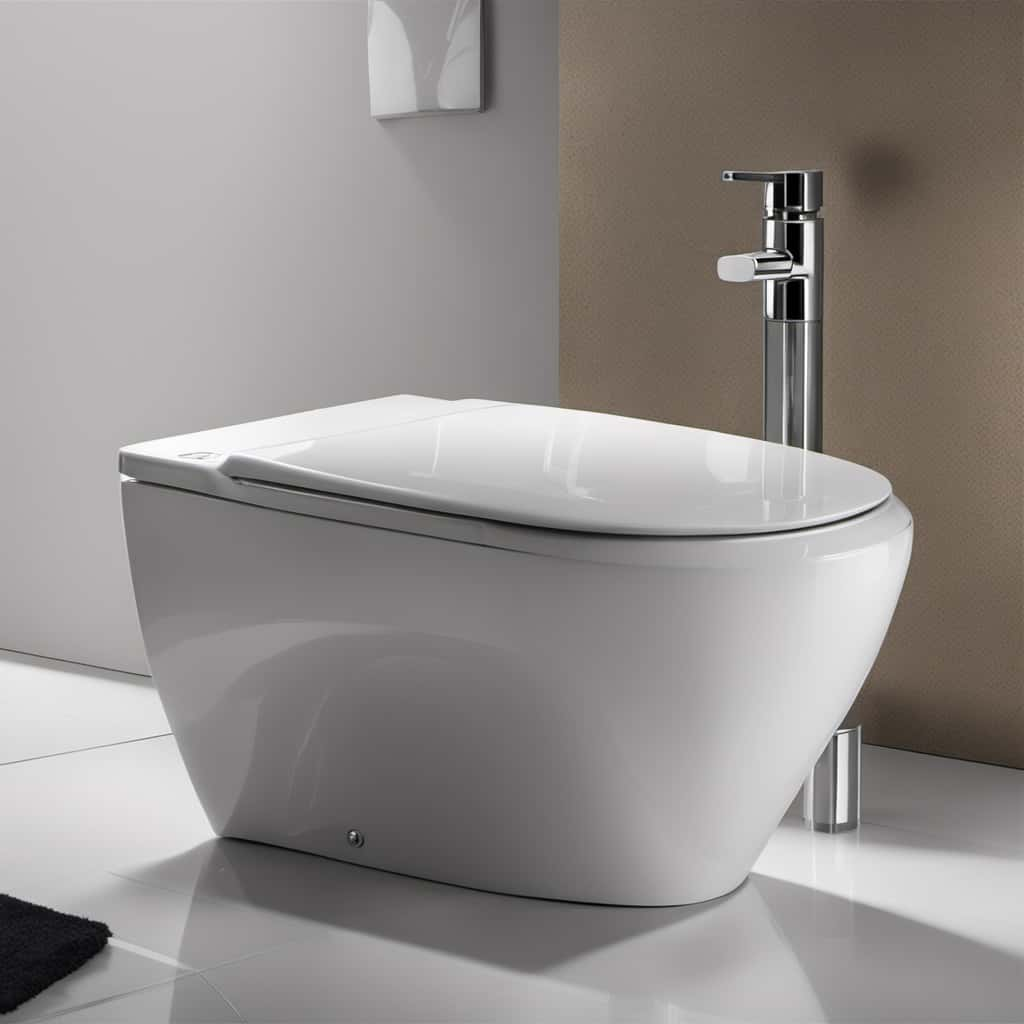
At All About Plumbing, we recognize how easy it is to be tempted to flush your hair down the drain. However, before you proceed with that, allow us to illuminate the possible consequences you might face.
Plunging hair into the plumbing system can lead to clogs, damage, and even environmental harm. Moreover, it may compromise your personal hygiene.
Fear not, dear reader, for we have alternatives and tips to keep your pipes flowing freely.
Join us as we explore the dos and don’ts of disposing of hair down the drain.

Key Takeaways
- Hair accumulation in drains can lead to clogs, slow draining sinks, and costly repairs.
- Proper disposal of hair waste and use of drain catchers can prevent plumbing problems.
- Hair can contribute to environmental issues such as clogging water treatment plants and the problem of microplastics.
- Sustainable alternatives to plastic-based personal care products and repurposing hair can help mitigate the environmental impact.
Potential Damage to Your Plumbing System
Putting hair down the drain can potentially cause damage to our plumbing system. It may seem harmless, but over time, the accumulation of hair can lead to clogs and blockages. This can result in slow draining sinks, foul odors, and even costly repairs.
To understand why hair can be detrimental to our plumbing, it’s important to consider the nature of hair and how it interacts with our drainage system.
Hair, especially when combined with hair care products, has a tendency to clump together and create dense masses. These clumps can easily get stuck in the pipes, restricting the flow of water and causing backups. Additionally, the accumulation of hair can attract other debris, such as soap residue and grease, further exacerbating the issue.
Hair salon etiquette also plays a role in preventing damage to our plumbing system. Hair salons, with their frequent haircuts and styling, generate a significant amount of hair waste. Proper disposal of this waste, such as collecting it in trash bins instead of rinsing it down the sink, can help prevent hair-related plumbing problems.
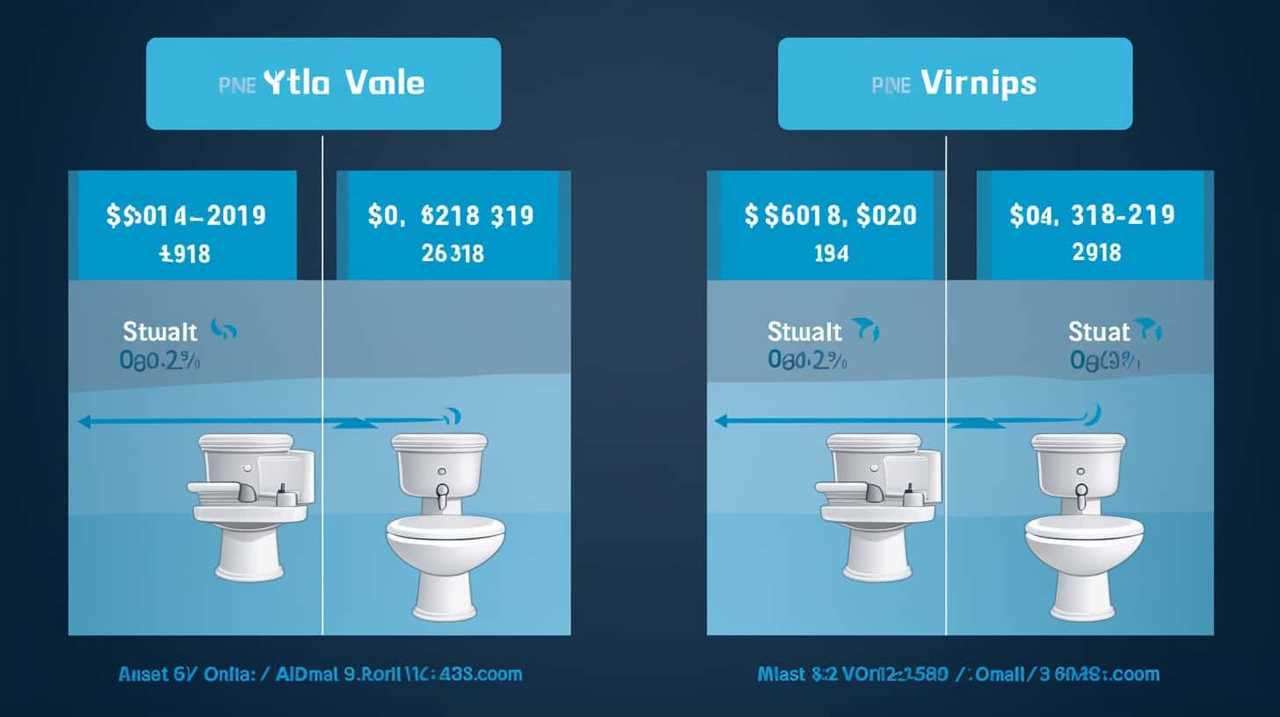
In the subsequent section, we’ll delve into the topic of ‘clogging up your drains’ and explore the potential consequences of allowing hair to accumulate in our plumbing system.
Clogging up Your Drains
Clogging up our drains occurs when hair accumulates and restricts the flow of water. It’s a common problem that can cause inconvenience and frustration. To help you understand the potential solutions and ways to prevent clogs, let’s take a closer look at the issue.
One effective way to prevent clogs is by using a drain catcher or strainer. These simple devices can be placed over the drain to catch hair and other debris, preventing them from going down the drain in the first place. Regularly cleaning the drain catcher will ensure its effectiveness.
Another solution is to regularly clean your drains. This can be done by using a mixture of vinegar and baking soda. Simply pour the mixture down the drain, let it sit for a while, and then flush it out with hot water. This combination helps break down any accumulated residue and keeps your drains clear.

Additionally, it’s important to be mindful of what you put down the drain. Avoid rinsing hair clippings or large amounts of hair down the drain, as this can contribute to clogs. Instead, dispose of hair properly in the trash.
By taking these preventive measures, you can reduce the chances of clogging up your drains and maintain a smoothly functioning plumbing system.
However, the impact of clogged drains goes beyond inconvenience, as it can have detrimental effects on the environment. Let’s explore this further.
Impact on the Environment
To understand the environmental impact of hair going down the drain, we need to consider the effects it has on our water systems. When hair enters our waterways, it can have detrimental effects on the ecosystem.
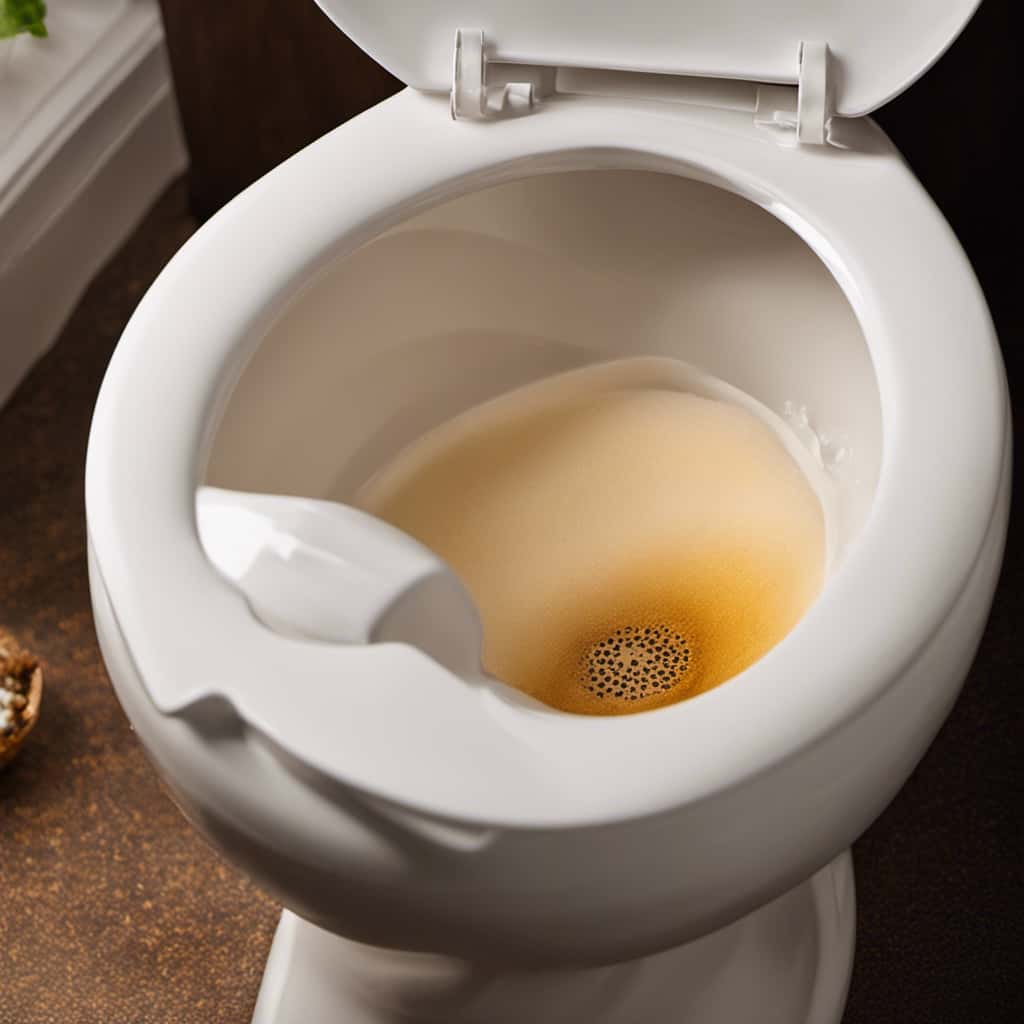
Hair, being made up of keratin, takes a long time to decompose. As a result, it can accumulate and form clumps, which can clog water treatment plants and pipes. These blockages can lead to costly repairs and maintenance.
Furthermore, hair can contribute to the problem of microplastics in the environment. Microplastics are tiny particles of plastic that are less than 5mm in size. They can be found in various sources, including personal care products like shampoos and conditioners that contain microbeads. When hair enters the water system, it can bind to these microplastics and transport them to rivers, lakes, and oceans. This can have harmful effects on marine life, as microplastics can be mistaken for food and ingested by animals.
To minimize the environmental impact of hair going down the drain, it’s advisable to use drain catchers or filters to trap hair before it enters the water system. Additionally, considering more sustainable alternatives to plastic-based personal care products can help reduce the amount of microplastics entering our environment.
Risks to Your Personal Hygiene
When it comes to the risks to our personal hygiene, putting hair down the drain can have some serious consequences.

Clogged pipes and drains are a common issue that can lead to costly repairs and inconvenience.
Additionally, the accumulation of hair in the drain can create the perfect environment for bacterial growth and unpleasant odors.
Lastly, for individuals experiencing hair loss or shedding, allowing hair to go down the drain can exacerbate the problem and make it more difficult to manage.
Clogged Pipes and Drains
Our personal hygiene can be at risk due to the accumulation of hair in our drains, leading to potential clog formation. It’s important to understand the potential health hazards associated with clogged pipes and drains, as well as the importance of proper hair care.
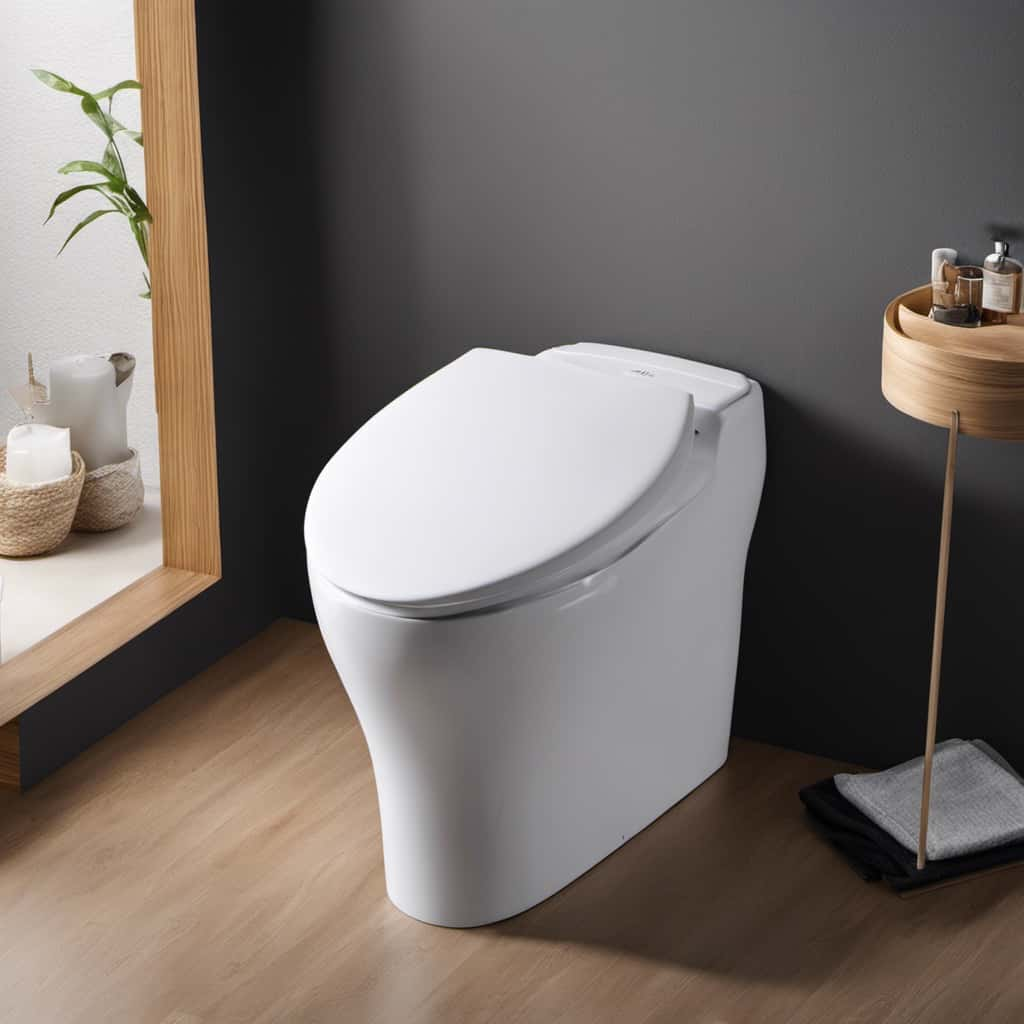
Here are four key points to consider:
- Blockage: When hair builds up in drains, it can create blockages that prevent water from flowing freely. This can lead to unpleasant odors and stagnant water, which can harbor bacteria and other pathogens.
- Mold and mildew: Standing water caused by clogged drains can create a breeding ground for mold and mildew. These fungi can cause respiratory issues, allergies, and skin irritations.
- Plumbing damage: Excessive hair accumulation can put strain on your plumbing system, leading to leaks, burst pipes, and costly repairs.
- Personal hygiene: Clogged drains can impact your personal hygiene routine, making it difficult to wash your hair properly and leaving you feeling less clean.
To avoid these risks, it’s important to regularly clean your drains, use drain guards to catch hair, and dispose of hair properly instead of putting it down the drain.
Bacterial Growth and Odor
How can bacterial growth and odor impact our personal hygiene when hair is put down the drain?
When hair is allowed to accumulate in drains, it can create a breeding ground for bacterial contamination. Bacteria thrive in moist environments, and the combination of hair, soap residue, and other organic matter provides the perfect conditions for their growth.
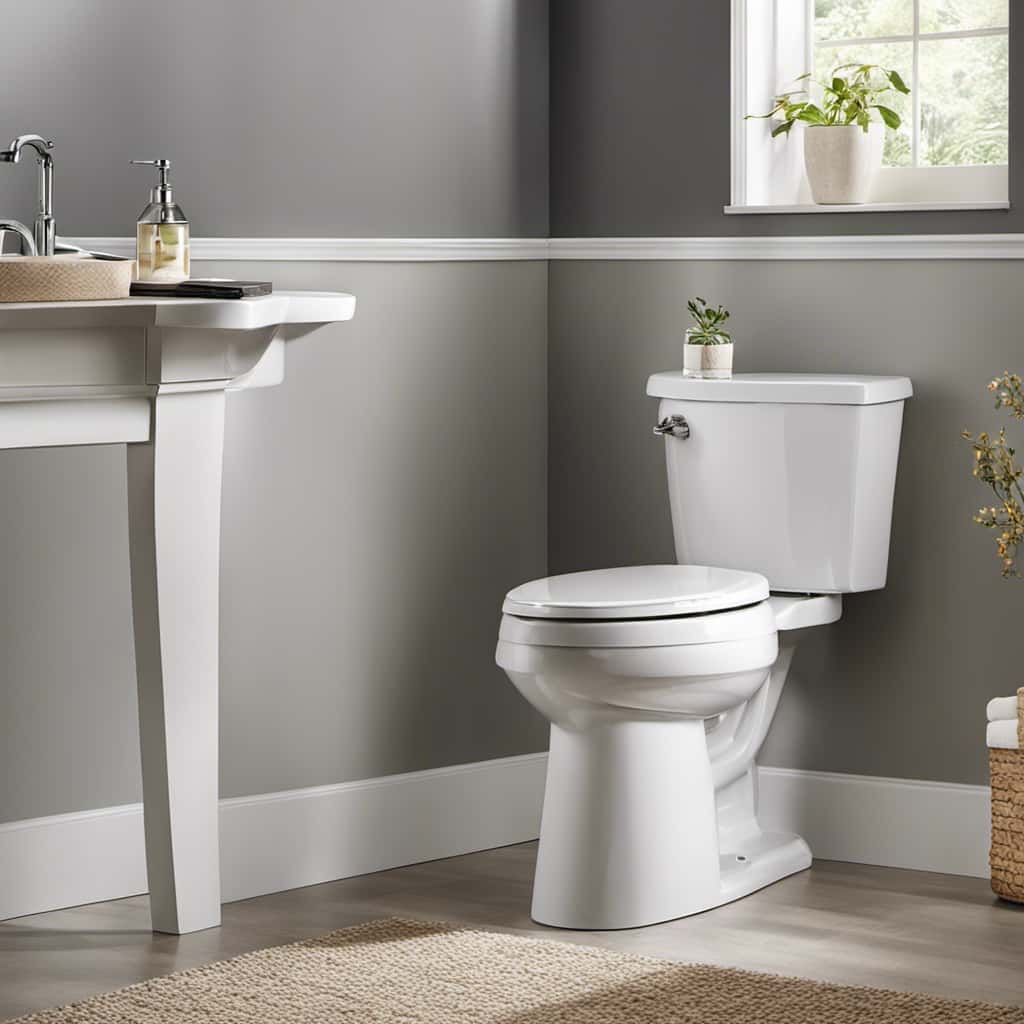
Over time, this bacterial buildup can lead to unpleasant odors in our bathrooms, affecting our personal hygiene. These odors can be particularly problematic in enclosed spaces, such as small bathrooms or shared facilities.
Furthermore, the presence of bacteria can increase the risk of infections and other health issues. Therefore, it’s crucial to properly dispose of hair and regularly clean our drains to prevent bacterial growth and the associated unpleasant odors.
Hair Loss and Shedding
To continue our discussion on the risks to personal hygiene, let’s now address the issue of hair loss and shedding.
Hair loss can be a concern for many individuals, and it can have an impact on personal hygiene. Here are four key points to consider:
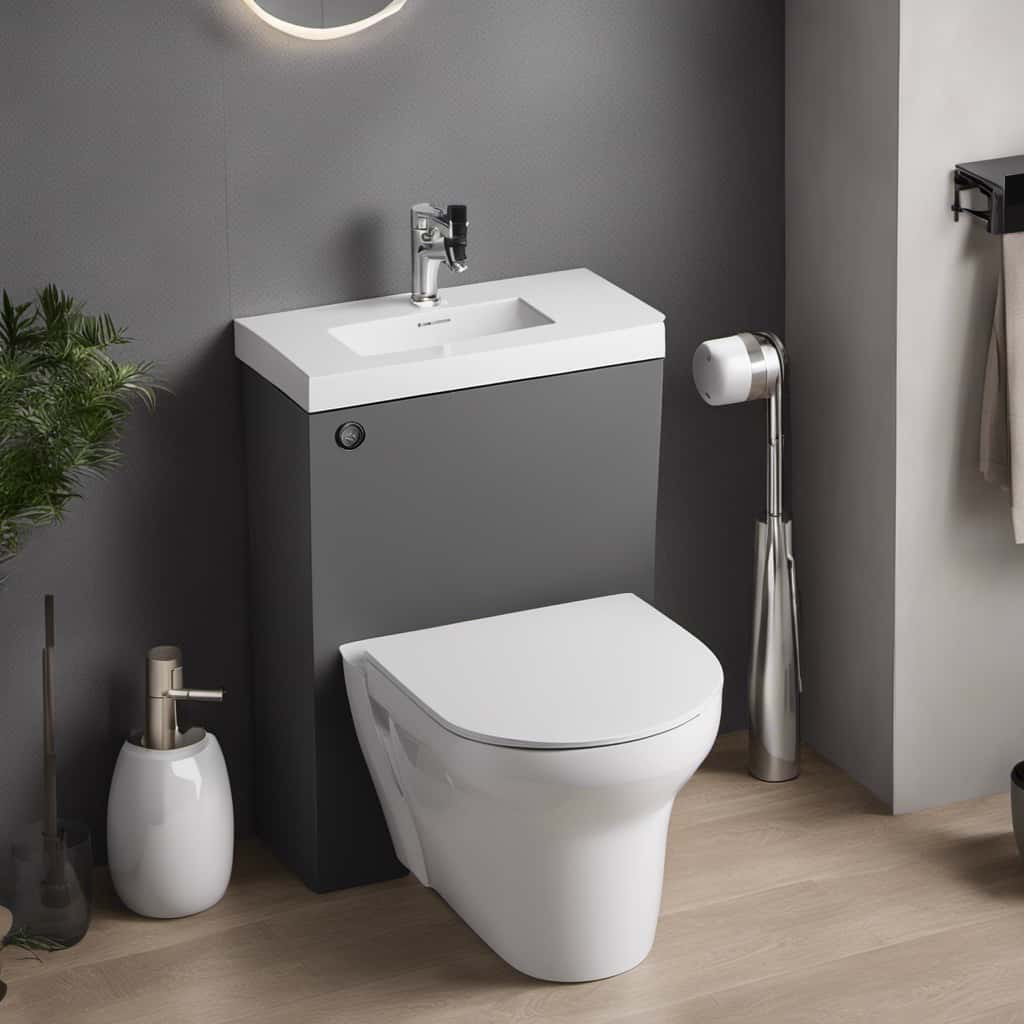
- Causes of hair shedding: Hair shedding can be caused by various factors, such as hormonal changes, stress, nutritional deficiencies, and certain medical conditions.
- Impact on personal hygiene: Excessive hair shedding can lead to a buildup of hair in your living spaces, including your bathroom. This can create an unclean and unsightly environment if not properly addressed.
- Hair loss treatments: There are various hair loss treatments available, including medications, laser therapy, and hair transplant surgeries. Consulting with a healthcare professional can help determine the best course of action for your specific situation.
- Proper hair care: Maintaining a healthy hair care routine can help minimize hair shedding. This includes using gentle hair products, avoiding excessive heat styling, and eating a balanced diet rich in essential nutrients.
Understanding the causes of hair shedding and considering appropriate hair loss treatments can help maintain personal hygiene and promote healthy hair growth.
Alternatives to Disposing of Hair Down the Drain
So, what’re some alternatives to disposing of hair down the drain?
Well, one option is to collect the hair and throw it in the trash.
Another option is to use a hair catcher or filter in your drain to catch the hair before it goes down.

Additionally, some people even repurpose their hair by using it for composting, as hair is high in nitrogen and can contribute to soil health.
Other Disposal Methods
We have several alternative methods for disposing of hair, including using a hair trap in the shower drain. Here are four other disposal methods to consider:
- Hair recycling: Instead of throwing hair in the trash, you can participate in hair recycling programs. These programs collect hair to make items like hair booms, which are used to clean up oil spills.
- Hair donation: If your hair is long enough and in good condition, consider donating it to organizations that make wigs for people with medical conditions. This way, your hair can bring joy and confidence to someone in need.
- Composting: Hair is high in nitrogen, making it a great addition to your compost pile. Chop it into small pieces before adding it, and it will help enrich your compost with essential nutrients.
- Craft projects: Get creative and repurpose your hair for craft projects. From making hair accessories to using it in artwork, there are endless possibilities for giving your hair a new life.
Environmental Impact of Hair
While it may be tempting to simply put hair down the drain, it’s important to consider the environmental impact and explore alternative methods of disposal.
Hair, when disposed of in this manner, can contribute to water pollution. The chemicals in hair products, such as shampoos and conditioners, can contaminate water sources, harming aquatic life and ecosystems. Additionally, hair can clog pipes and sewage systems, leading to costly repairs and maintenance.
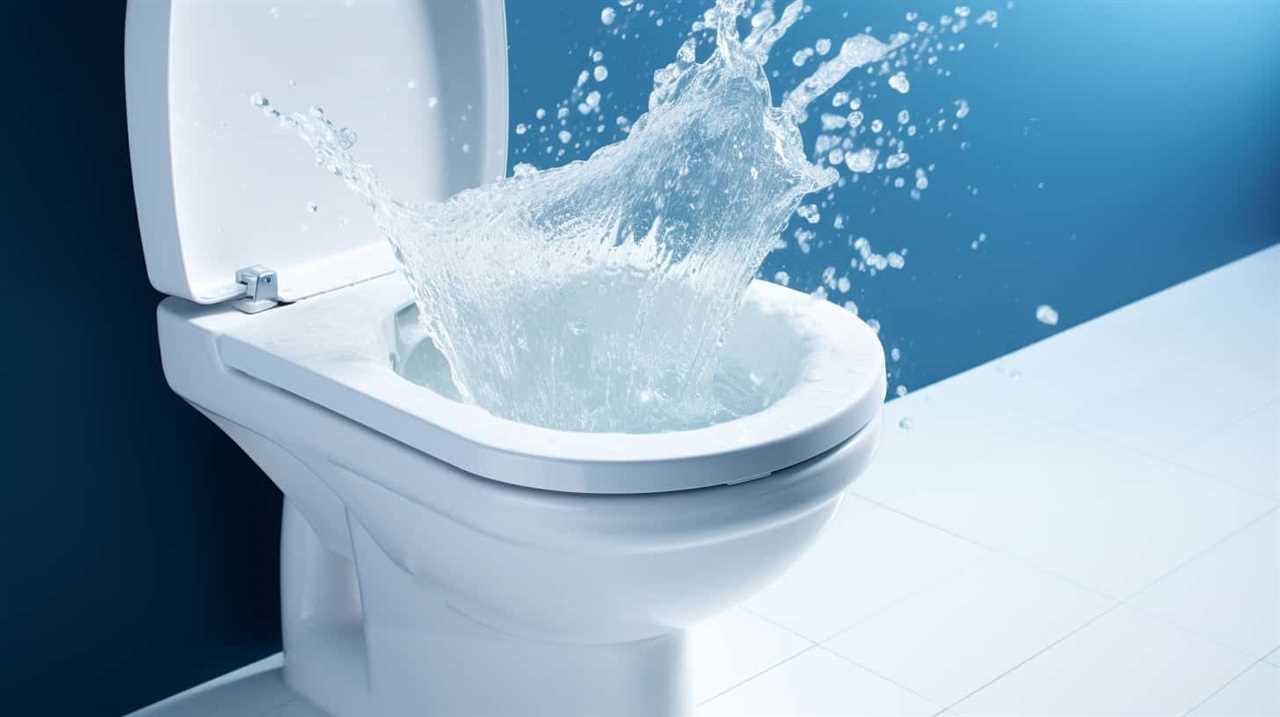
A more environmentally friendly option is composting hair. Hair is rich in nitrogen, an essential nutrient for plants. When added to compost, hair helps to create nutrient-rich soil, promoting plant growth and reducing the need for chemical fertilizers. Composting hair not only benefits the environment but also provides a natural and sustainable solution for hair disposal.
Hair for Composting?
How can we effectively compost hair as an alternative to disposing of it down the drain? Here are four ways to put hair to good use:
- Hair for gardening: Hair can be a great addition to your compost pile. Its high nitrogen content helps nourish plants and promote healthy growth. Simply collect hair clippings and add them to your compost bin. Make sure to mix them well with other organic materials like food scraps and yard waste.
- Hair for crafts: Instead of throwing away hair, consider using it for crafts. Hair can be woven into ropes or used as stuffing for pillows and toys. You can also create unique art pieces by incorporating hair into sculptures or mixed-media projects. Let your creativity flow and find new ways to repurpose hair.
- Hair as mulch: Another option is to use hair as mulch in your garden. Spread a layer of hair around your plants to help retain moisture, suppress weeds, and regulate soil temperature. As the hair decomposes, it releases nutrients into the soil, benefiting your plants.
- Hair for wildlife: If you have a backyard garden, consider leaving clumps of hair in strategic locations. Birds and other small creatures can use the hair as nesting material, providing them with insulation and protection.
Tips for Maintaining a Healthy Plumbing System
To maintain a healthy plumbing system, it is essential to regularly clean and unclog drains. By taking preventive measures and implementing simple maintenance routines, you can ensure the efficiency of your plumbing and prevent drain blockages. Here are some tips to help you maintain a healthy plumbing system:
| Tips for Maintaining a Healthy Plumbing System | |
|---|---|
| Avoid pouring grease or oil down the drain | Use a strainer in your sink to catch hair and debris |
| Only flush toilet paper down the toilet | Avoid using chemical drain cleaners |
| Run hot water down the drain after each use | Use a plunger to unclog minor blockages |
| Schedule regular plumbing inspections | Consider installing a water softener to prevent mineral buildup |
Regularly cleaning your drains and implementing these tips will not only maintain the efficiency of your plumbing system but also prevent costly and inconvenient drain blockages. Remember that prevention is key in maintaining a healthy plumbing system. By being proactive and taking care of your drains, you can avoid the hassle of clogged pipes and ensure smooth functioning for years to come.
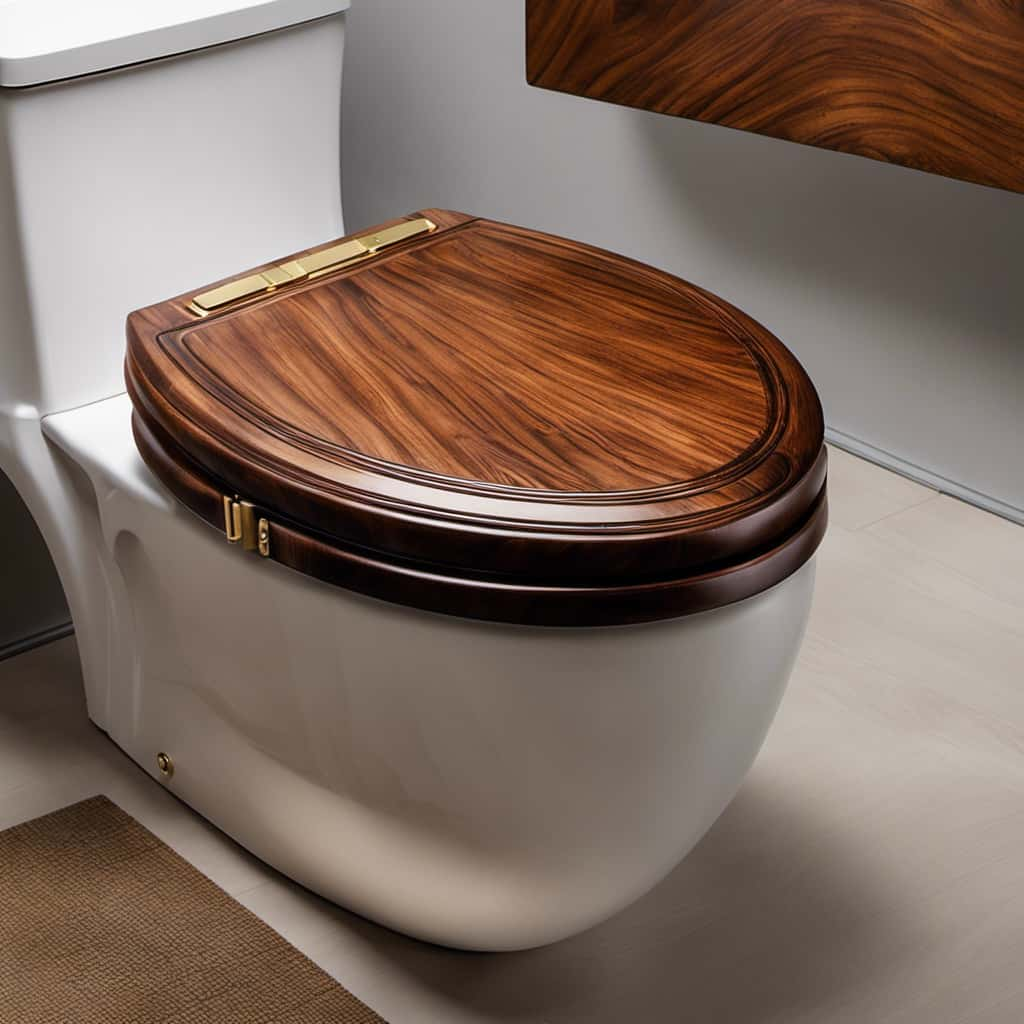
Frequently Asked Questions
How Long Does It Take for Hair to Clog up Drains?
When hair is regularly put down the drain, it can lead to clogs in the plumbing system. These clogs can cause water to back up and create a messy and inconvenient situation.
Additionally, hair can have a negative effect on water quality as it accumulates in drains and pipes.
Therefore, it’s important to be mindful of the impact that hair can have on our plumbing systems and to take preventative measures to avoid clogs.
Can Hair Damage the Pipes in My Plumbing System?
Hair in plumbing can definitely cause damage to the pipes in our plumbing system. As it accumulates over time, hair clogging can obstruct the flow of water, leading to blockages and potential backups. The hair can also get tangled with other debris, exacerbating the problem.
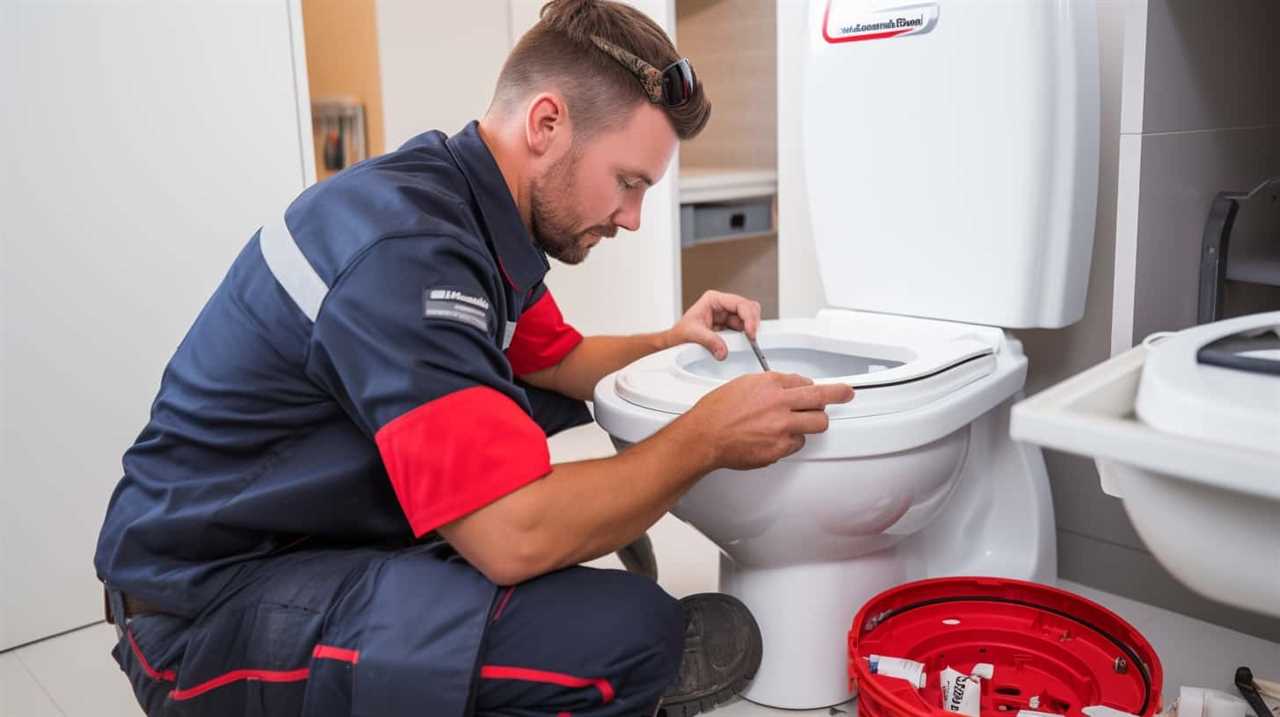
It’s important to be mindful of what goes down the drain to avoid potential plumbing issues. Regularly cleaning out hair from the drain can help prevent costly repairs in the future.
What Are the Environmental Consequences of Putting Hair Down the Drain?
Putting hair down the drain can have negative environmental consequences. When hair goes down the drain, it can clog pipes and contribute to potential water pollution. The accumulation of hair in the plumbing system can obstruct the flow of water and lead to costly repairs.
Additionally, hair can contain chemicals from hair products that can be harmful to aquatic life if they make their way into water bodies. It’s important to dispose of hair properly to minimize its environmental impact.
Can Hair in the Drain Affect the Smell and Cleanliness of My Bathroom?
Putting hair down the drain can definitely affect the smell and cleanliness of your bathroom. Trust us, we’ve learned the hard way.

Hair can clog the drain, causing water to back up and create a not-so-pleasant odor.
To avoid this, we suggest using a drain strainer or hair catcher to prevent hair from going down the drain.
Additionally, regular cleaning and using DIY drain cleaners can help keep your bathroom smelling fresh and clean.
Are There Any Alternatives to Disposing of Hair Down the Drain?
When it comes to hair disposal methods, it’s important to consider the impact of hair on water treatment facilities. Putting hair down the drain may seem convenient, but it can cause clogs and blockages in pipes.

Instead, consider alternatives such as collecting hair in a mesh drain catcher or disposing of it in the trash. By doing so, we can help maintain the cleanliness and functionality of both our drains and water treatment systems.
Conclusion
In conclusion, it isn’t advisable to put hair down the drain due to the potential damage it can cause to your plumbing system, the risk of clogging up your drains, and the negative impact on the environment.
Additionally, disposing of hair down the drain can also pose risks to your personal hygiene. It’s important to consider alternatives such as collecting hair and disposing of it in the trash to maintain a healthy plumbing system.
With an impeccable eye for detail and a passion for bathroom-related, Ava leads our editorial team gracefully and precisely.
Under her guidance, Best Modern Toilet has flourished as the go-to resource for modern bathroom enthusiasts. In her free time, you might find Ava exploring antique shops and looking for vintage bathroom fixtures to add to her collection.
FAQ - Advanced Bathroom Queries
Cheapest Flushable Cat Litter

We understand your skepticism about discovering the most affordable flushable cat litter. But fret not, cat lovers! We’ve conducted thorough research and put together a detailed guide to assist you in exploring the realm of economical flushable cat litters. Dive in and uncover the secrets to finding the best deal!
From the benefits and factors to consider, to step-by-step transitioning and maintenance tips, we’ve got you covered.
Get ready to master the art of finding affordable flushable cat litter without compromising quality.
Key Takeaways
- Reduces landfill waste
- Contributes to a more sustainable future
- Offers convenience and ease of use
- Saves time and effort in cleaning the litter box
Benefits of Using Flushable Cat Litter
One of the main benefits of using flushable cat litter is that it reduces the amount of waste we’ve to dispose of. This has a significant positive environmental impact as it helps to minimize landfill waste. Traditional cat litter, which isn’t flushable, adds to the already massive amount of non-biodegradable waste in our landfills. Choosing a flushable cat litter allows us to contribute to a more sustainable future.
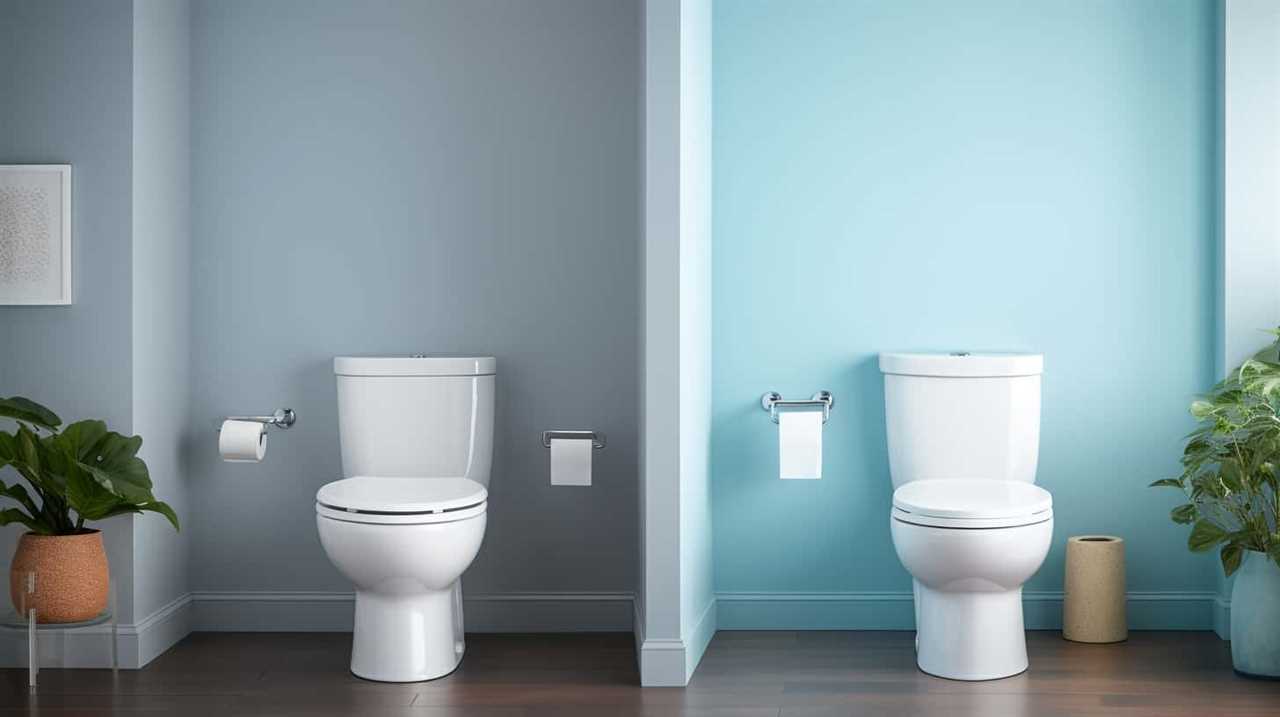
In addition to the environmental benefits, flushable cat litter also offers convenience and ease. Instead of scooping and bagging up the litter box waste, we can simply flush it down the toilet. This saves time and effort, making the process of maintaining a clean litter box much more convenient.
Considering both the environmental impact and the convenience and ease it provides, using flushable cat litter is a smart choice for cat owners. However, it’s important to consider certain factors when choosing the cheapest flushable cat litter.
Factors to Consider When Choosing the Cheapest Flushable Cat Litter
When selecting the cheapest flushable cat litter, there are several factors that we should take into consideration. Here are four key factors to keep in mind:
- Cost-effective options: Look for cat litters that offer the best value for money. Consider the price per pound or per use, as well as any discounts or bulk options available.
- Environmental impact: Opt for cat litters that are biodegradable and made from sustainable materials. This not only reduces waste but also minimizes the impact on the environment.
- Clumping ability: Choose a cat litter that forms strong clumps for easy scooping and cleaning. This ensures efficient use and reduces the frequency of litter box changes.
- Odor control: Look for cat litters that have effective odor control properties. This helps to keep your home smelling fresh and clean, even with a litter box in use.
Considering these factors will help you find the cheapest flushable cat litter that meets your budget, while also being environmentally friendly.

Now, let’s move on to a step-by-step guide on how to transition your cat to flushable litter.
Step-By-Step Guide on How to Transition Your Cat to Flushable Litter
To transition our cat to flushable litter, we found using a gradual approach to be the most effective. The transition process can be stressful for cats, so it’s important to take it slow and be patient.
Start by mixing a small amount of flushable litter with your cat’s current litter, gradually increasing the ratio over time. This allows your cat to become familiar with the new litter while still having the comfort of their old litter.
Additionally, provide alternative options for your cat, such as a separate litter box with their old litter, to ease the transition. Observe your cat’s behavior and adjust the transition pace accordingly.
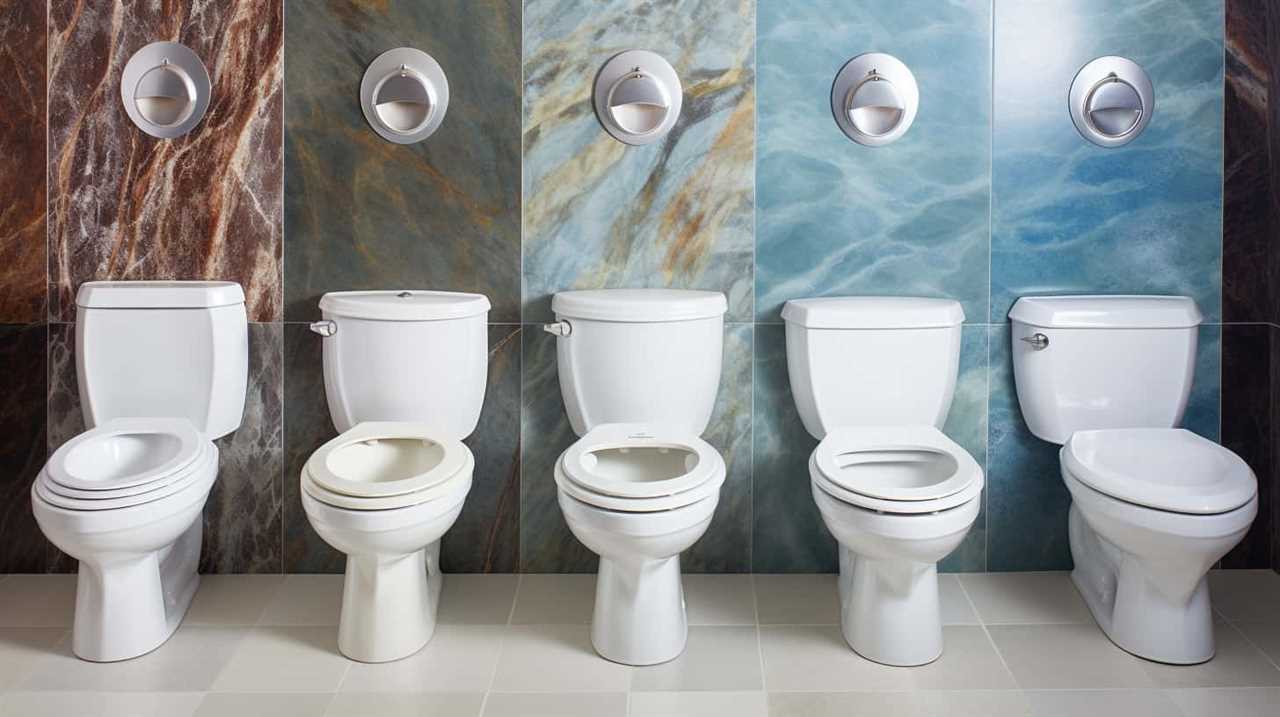
Remember to praise and reward your cat for using the flushable litter to reinforce positive associations. With time and patience, your cat will successfully transition to flushable litter.
Tips for Maintaining a Clean and Odor-Free Litter Box With Flushable Cat Litter
To maintain a clean and odor-free litter box with flushable cat litter, we recommend implementing a regular scooping routine. Here are some tips for reducing litter tracking and properly disposing of flushable cat litter:
- Place a litter mat or tray outside the litter box to catch any litter that may stick to your cat’s paws. This will help prevent it from being tracked around your home.
- Use a litter box with high sides or a covered litter box to contain any litter that may be kicked out during your cat’s digging and burying.
- Scoop the litter box at least once a day to remove any waste and clumps. This will help prevent odor buildup and keep the litter box clean for your cat.
- When disposing of flushable cat litter, make sure to follow the manufacturer’s instructions. Some brands can be safely flushed down the toilet, while others may require bagging and disposing of in the trash.
By following these tips, you can maintain a clean and odor-free litter box with flushable cat litter.
Now, let’s move on to the next section where we’ll provide reviews and recommendations for the top affordable flushable cat litters.
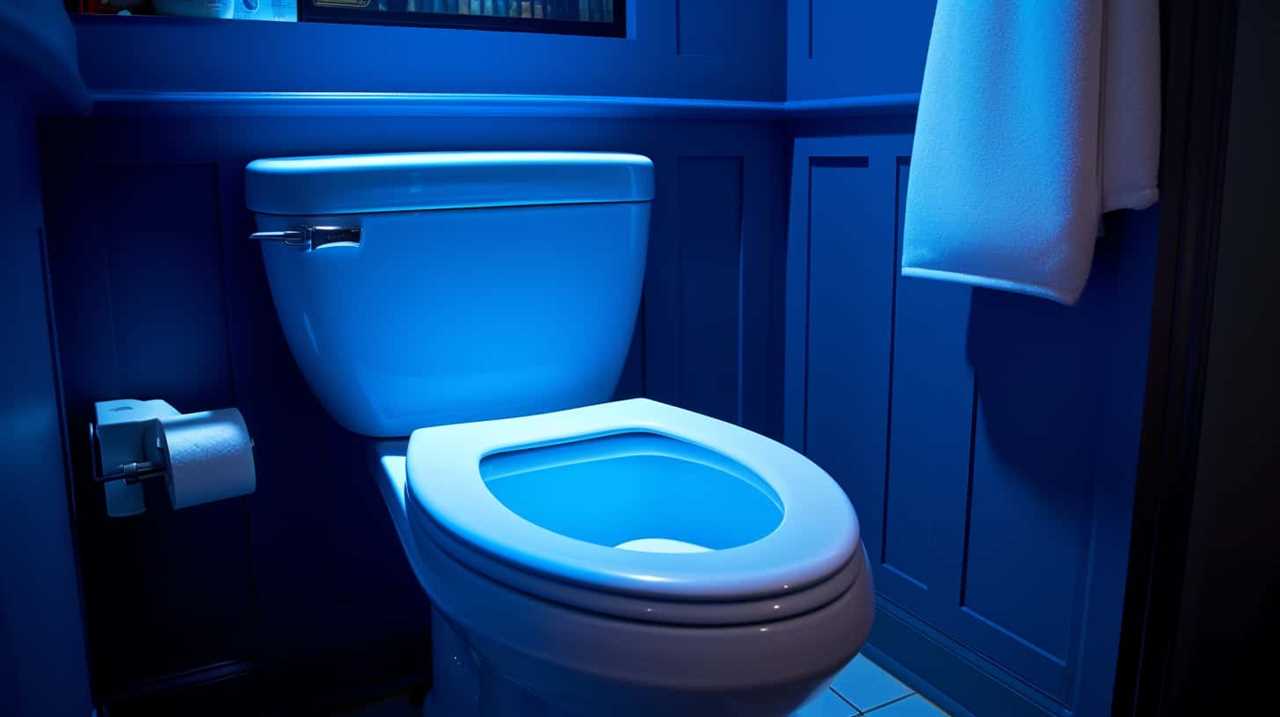
Reviews and Recommendations for the Top Affordable Flushable Cat Litters
Now, let’s dive into our reviews and recommendations for the top affordable flushable cat litters.
When considering flushable cat litters, it’s important to evaluate their environmental impact. The advantage of flushable cat litter lies in its ability to be safely disposed of through the toilet, reducing waste in landfills. However, it’s crucial to choose a litter made from biodegradable materials to ensure minimal impact on the environment.
Additionally, when comparing the cost effectiveness of flushable cat litter with traditional options, it’s essential to consider factors such as lifespan and frequency of litter changes. While flushable cat litter may initially seem more expensive, it can be cost-effective in the long run due to its longer lifespan and reduced waste management costs.
Frequently Asked Questions
Can Flushable Cat Litter Be Used in All Types of Litter Boxes?
Yes, flushable cat litter can be used in all types of litter boxes. However, it is important to consider the pros and cons of using flushable cat litter alternatives before making a decision.

Is Flushable Cat Litter Safe for Septic Systems?
Flushable cat litter may be convenient, but is it safe for septic systems? While it is touted as eco-friendly, the pros and cons should be considered. Is flushable cat litter safe for the environment?
How Often Should I Flush the Litter When Using Flushable Cat Litter?
When using flushable cat litter, we flush it every time our cat uses the litter box. This ensures cleanliness and prevents odors. However, there are alternatives to flushable cat litter that may be more cost-effective.
Can I Mix Flushable Cat Litter With Regular Cat Litter?
When considering mixing cat litter, it’s important to note that flushable and regular litter have different compositions and functionalities. It’s best to avoid mixing them to maintain the effectiveness of flushable litter and explore alternatives to flushable litter instead.
Are There Any Specific Brands of Flushable Cat Litter That Are More Environmentally Friendly?
There are alternative eco-friendly options available when it comes to flushable cat litter. Using flushable litter has several benefits, such as reducing waste and being more environmentally friendly compared to traditional cat litter.
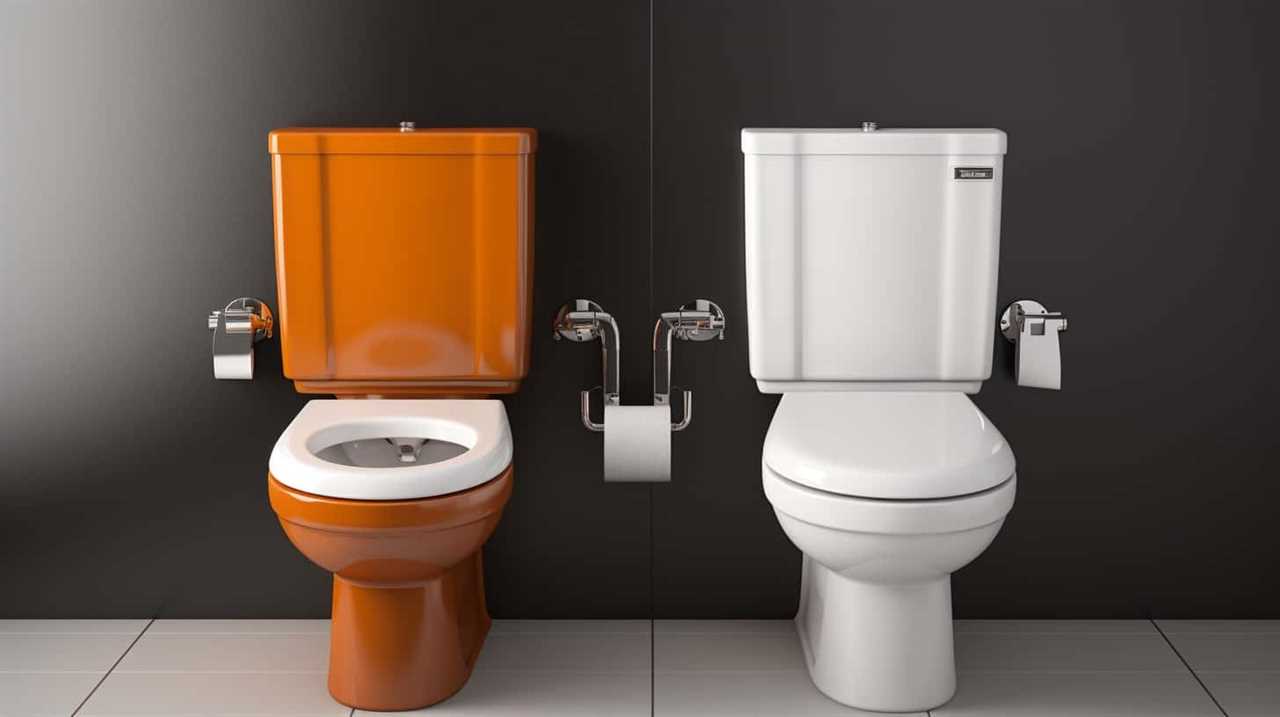
Conclusion
In conclusion, finding the cheapest flushable cat litter can be a game-changer for both you and your feline friend. By considering factors such as cost, effectiveness, and environmental impact, you can make an informed decision.
Transitioning your cat to flushable litter may require patience, but it’s worth it in the long run. With proper maintenance, you can keep your litter box clean and odor-free.
So why not give it a try and experience the convenience and efficiency of flushable cat litter? It’s like finding a hidden treasure for both you and your cat!
With an impeccable eye for detail and a passion for bathroom-related, Ava leads our editorial team gracefully and precisely.
Under her guidance, Best Modern Toilet has flourished as the go-to resource for modern bathroom enthusiasts. In her free time, you might find Ava exploring antique shops and looking for vintage bathroom fixtures to add to her collection.
FAQ - Advanced Bathroom Queries
Can You Force Flush a Toilet
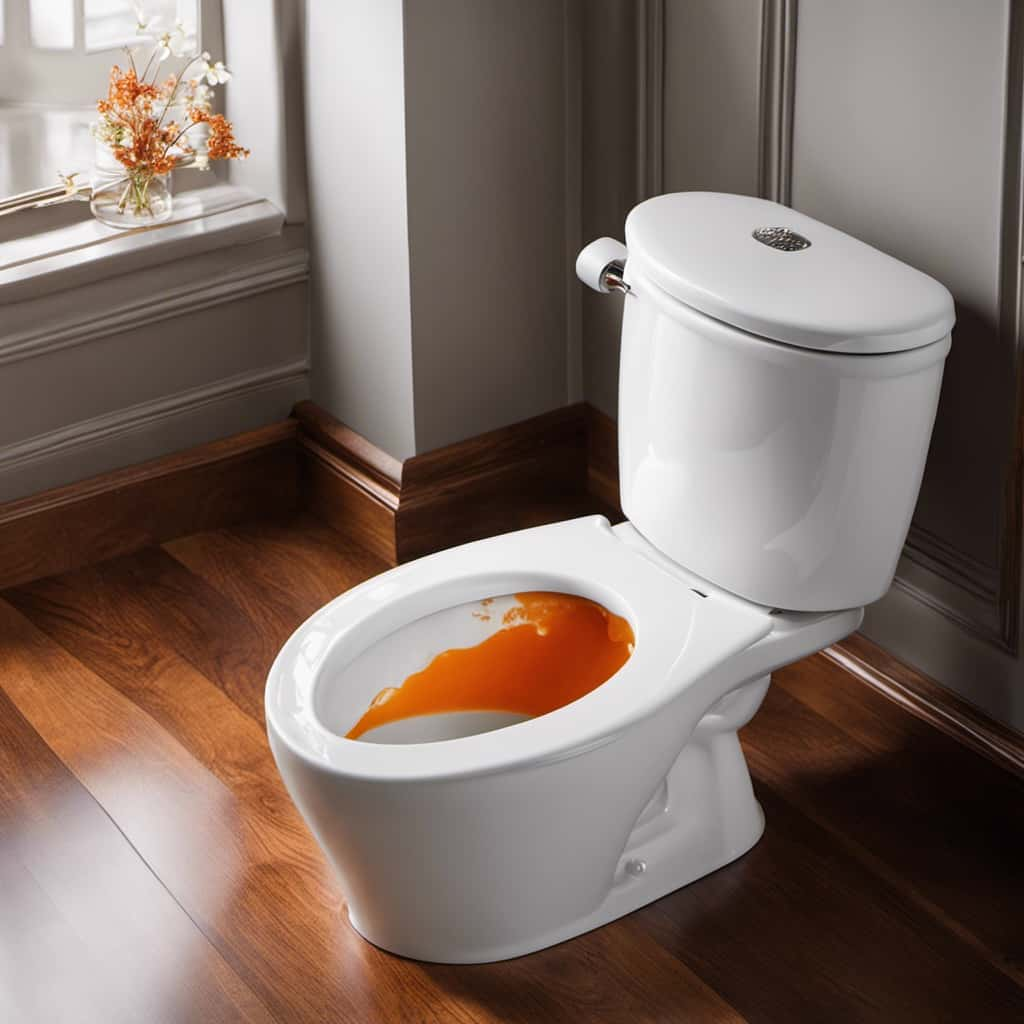
Yes, you can unleash the power of a force flush on your toilet! Have you ever thought about it before? We’re here to let you know that it is possible!
In this article, we will delve into the mechanics of a toilet flush and explain when a force flush is necessary.
We’ll also provide you with a step-by-step guide and tips for a successful force flush.
So, buckle up and get ready to master the art of force flushing your toilet!
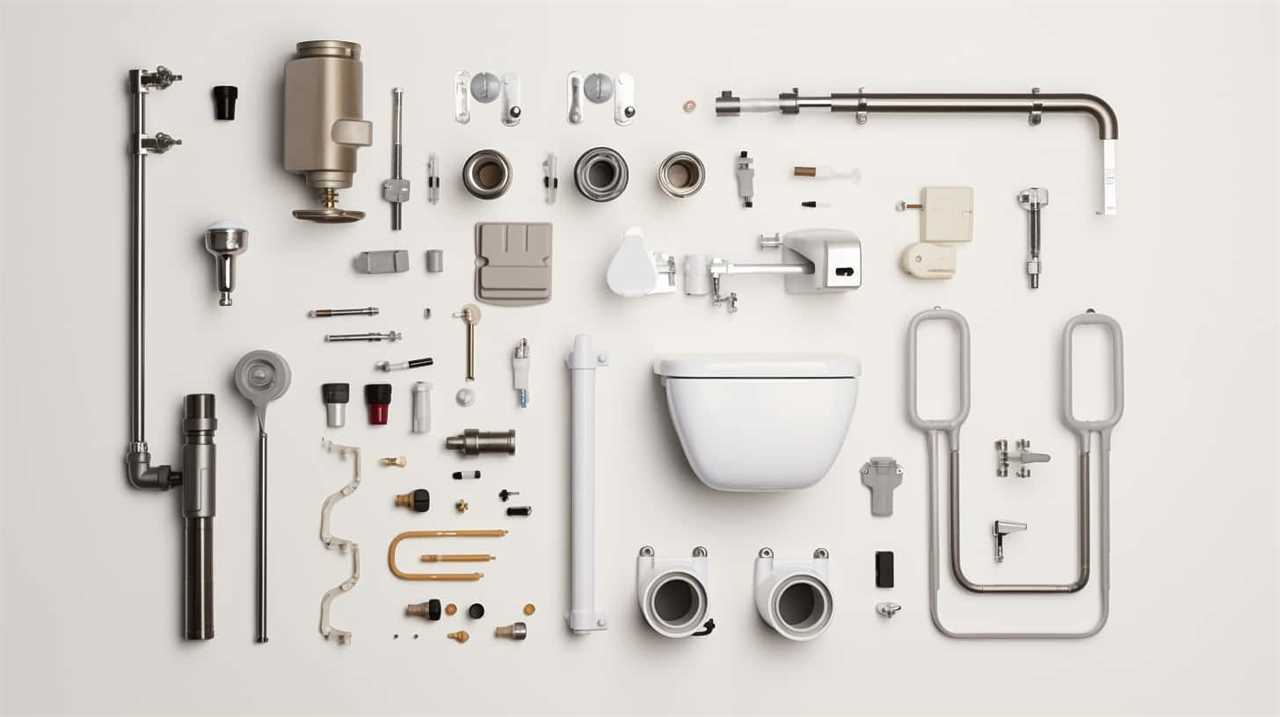
Key Takeaways
- The flush lever lifts the flapper, allowing water to rush into the bowl.
- Troubleshooting weak flushes, inconsistent water levels, or clogs involves checking the water supply, flush valve, and tank components.
- If conventional methods fail to unclog a toilet, calling a professional plumber may be necessary.
- Tools and equipment for force flushing a toilet include a plunger, high-pressure water source, rubber gloves, towels, and a bucket or pail.
Understanding the Mechanics of a Toilet Flush
To understand the mechanics of a toilet flush, we’ll delve into the workings of its water flow and pressure.
The toilet flush mechanism is a complex system that relies on the proper functioning of several components. When the flush lever is pressed, it lifts the flapper, allowing water from the tank to rush into the bowl. This creates a strong force that pushes waste down the drain.
However, if you’re experiencing issues with your toilet flush, troubleshooting the problem can be a bit challenging. Common issues include weak flushes, inconsistent water levels, or clogs.
It’s important to check the water supply, the flush valve, and the tank components for any signs of damage or malfunction. By understanding the inner workings of the toilet flush mechanism, you can effectively troubleshoot and fix any issues that arise.

Identifying When a Force Flush Is Necessary
When identifying the instances in which a force flush is necessary, we must consider the factors that may contribute to a weak or ineffective flush. Signs of a clogged toilet include water that rises to the rim or drains slowly, gurgling sounds, or a foul odor. If these signs persist despite attempts to unclog the toilet using a plunger or other methods, it may be time to call a professional plumber.
A professional plumber has the expertise and tools to effectively diagnose and resolve complex clogs that can’t be cleared through conventional means. Knowing when to call a professional plumber can prevent further damage to your plumbing system and ensure a proper force flush is performed if necessary.
With an understanding of when a force flush is needed, let’s now explore the tools and equipment required for this process.
Tools and Equipment for Force Flushing a Toilet
We will need specific tools and equipment to successfully force flush a toilet. Here are the essential items you’ll need:
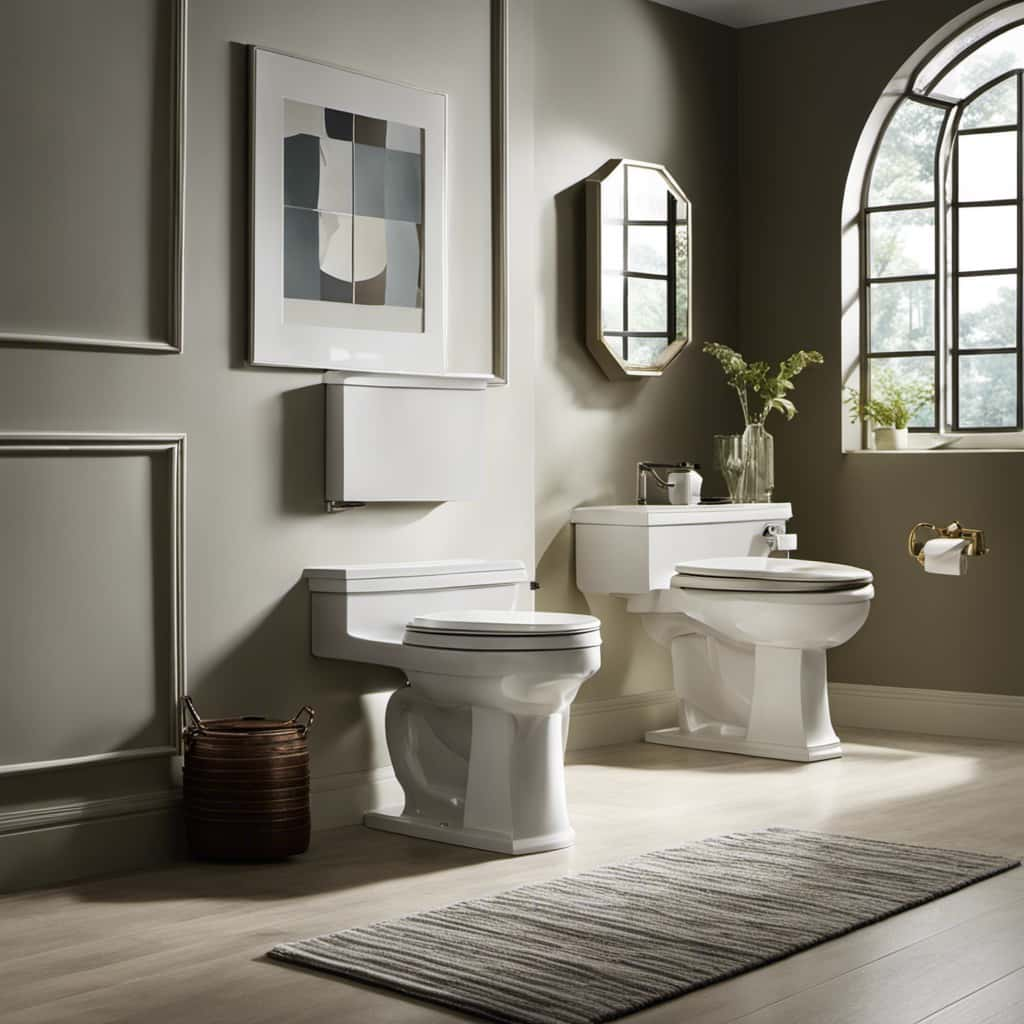
- Plunger: A plunger is a basic tool used to create pressure and force water through the drain. Choose a plunger with a flange or extension at the bottom for better seal and suction.
- High-pressure water source: To generate a forceful flush, you’ll need a high-pressure water source. This can be a handheld bidet sprayer, a pressure washer, or even a garden hose with a nozzle attachment.
- Rubber gloves: Protect your hands from any potential mess or bacteria by wearing rubber gloves. This will also provide a better grip on the plunger.
- Towels: Keep towels handy to clean up any spills or splashes that may occur during the force flushing process.
- Bucket or pail: Have a bucket or pail nearby to collect any excess water that may overflow during the force flushing.
Step-by-Step Guide to Force Flushing a Toilet
To successfully force flush a toilet, we will need to follow a step-by-step guide. Below is a table that outlines the process, along with some alternative methods for unclogging toilets.
| Step | Action |
|---|---|
| 1 | Put on protective gloves and eyewear. |
| 2 | Check for common toilet problems like a clogged trap or blocked vent pipe. |
| 3 | If the toilet is not clogged, try a plunger to force water down the drain. |
| 4 | If the plunger doesn’t work, try using a toilet auger to remove the blockage. |
| 5 | If all else fails, use a force flush by pouring a bucket of water into the toilet bowl. |
By following these steps, you can effectively force flush a toilet and resolve common toilet problems. In the next section, we will discuss some tips and precautions for a successful force flush.
Now, let’s move on to the tips and precautions for a successful force flush.
Tips and Precautions for a Successful Force Flush
Now, let’s explore some essential tips and precautions to ensure a successful force flush of the toilet.
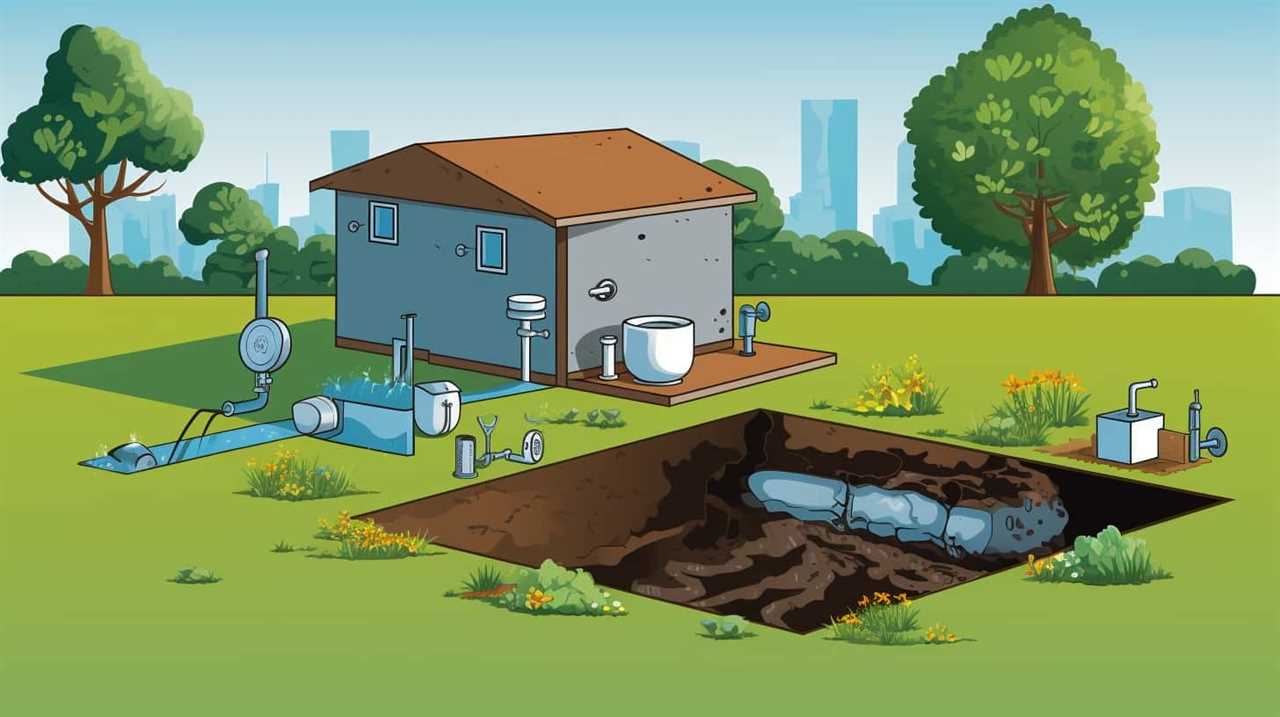
Here are some tips to prevent clogs and troubleshoot common issues:
- Use a plunger: A plunger is an effective tool for force flushing a toilet. Ensure a tight seal around the drain and use vigorous up-and-down motions to create suction and dislodge any blockage.
- Apply lubricant: If the plunger doesn’t work, try applying a small amount of lubricant, such as dish soap or petroleum jelly, around the rim of the plunger. This can improve suction and increase the chances of a successful force flush.
- Avoid excessive force: While force flushing is necessary in some cases, it’s important to avoid using excessive force as it can damage the toilet or pipes. Apply firm pressure, but be cautious.
- Check the water level: Before attempting a force flush, ensure that the water level in the toilet bowl isn’t too high. If it is, remove some water using a bucket or cup to prevent overflow.
- Call a professional: If force flushing doesn’t resolve the issue or if you encounter any other problems, it’s best to call a professional plumber. They have the expertise to handle complex toilet issues.
Frequently Asked Questions
How Long Does It Typically Take to Force Flush a Toilet?
Typically, it takes a few minutes to force flush a toilet. Common mistakes when trying to force flush include using excessive force, not checking the water level, or ignoring clogs. To troubleshoot a toilet that won’t force flush, check the water level, inspect for clogs, and ensure the flapper is functioning properly.
Can Force Flushing a Toilet Cause Any Damage to the Plumbing System?
Force flushing a toilet without proper knowledge or tools can potentially cause significant damage to the plumbing system. To prevent this, it’s crucial to understand the risks involved and take necessary precautions to ensure the integrity of the plumbing is maintained.
Is It Possible to Force Flush a Toilet Without Using Any Tools or Equipment?
Yes, you can force flush a toilet without using any tools or equipment. Some natural methods for unclogging toilets include using hot water, vinegar and baking soda, or a plunger. These DIY solutions can help resolve toilet flushing issues.
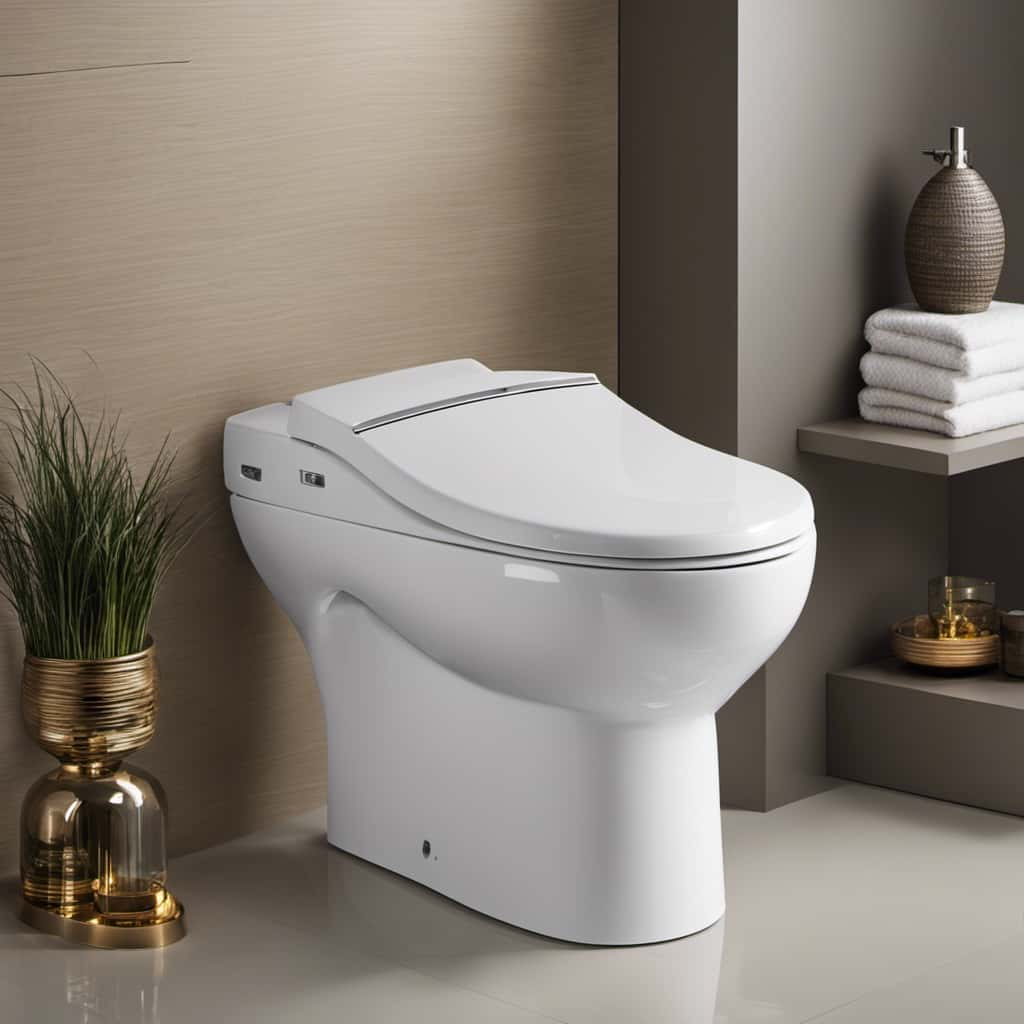
What Are Some Common Signs That Indicate a Force Flush Might Be Necessary?
Common signs that indicate a force flush might be necessary include water backing up, slow draining, and repeated clogs. To prevent clogs and avoid force flushing, proper maintenance and avoiding flushing non-flushable items are essential.
Are There Any Alternative Methods to Force Flushing a Toilet if the Recommended Tools Are Not Available?
Yes, there are alternative methods to force flush a toilet if the recommended tools are not available. DIY techniques such as pouring hot water or using a plunger can help resolve the issue.
Conclusion
In conclusion, understanding the mechanics of a toilet flush is essential for identifying when a force flush is necessary. By following a step-by-step guide and using the right tools and equipment, you can successfully force flush a toilet.
Remember to exercise caution and follow the tips provided for a smooth and efficient flush. With these techniques, you’ll be able to unclog even the most stubborn toilets with the force of a thousand storms!
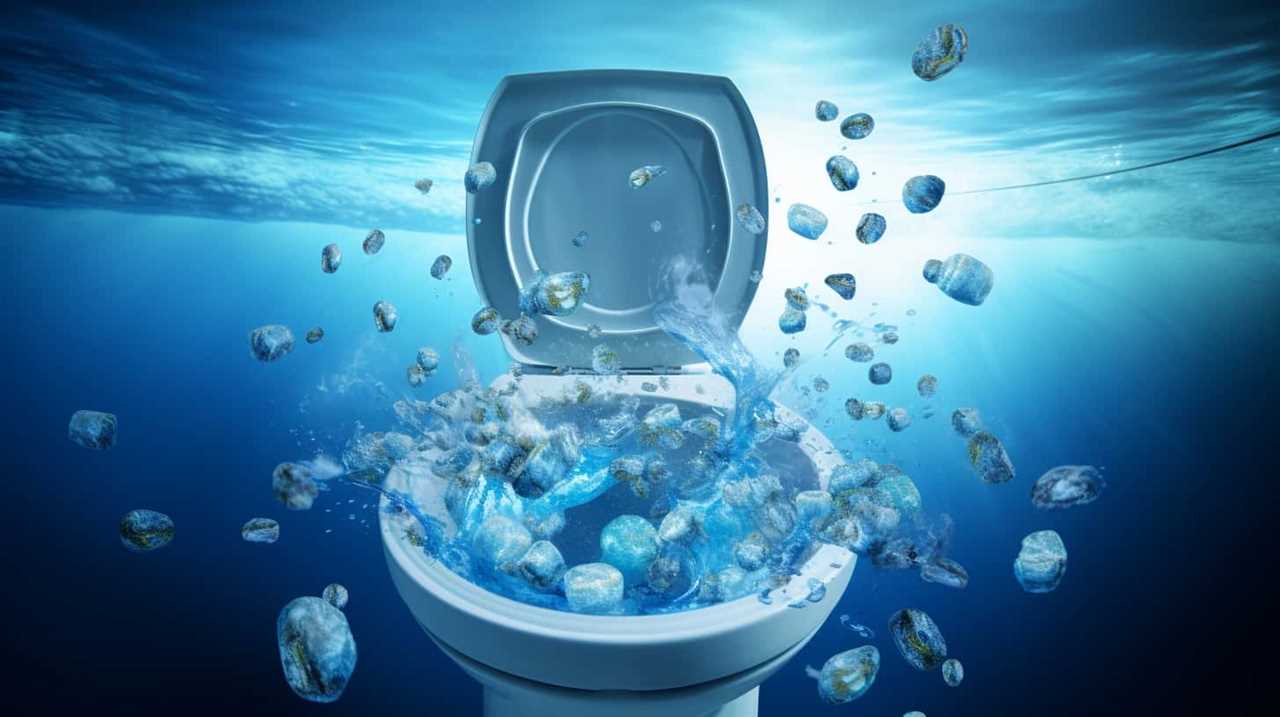
With an impeccable eye for detail and a passion for bathroom-related, Ava leads our editorial team gracefully and precisely.
Under her guidance, Best Modern Toilet has flourished as the go-to resource for modern bathroom enthusiasts. In her free time, you might find Ava exploring antique shops and looking for vintage bathroom fixtures to add to her collection.
FAQ - Advanced Bathroom Queries
Why Can’t You Flush Toilet Roll in Greece

Curious as to why toilet paper cannot be flushed in Greece? Allow us to provide some insight.
The plumbing infrastructure in Greece, although modern, is not designed to handle the disposal of toilet paper. Flushing it can lead to clogs and damage to the sewage system.
But don’t worry, we’ve got you covered. In this article, we’ll explore the reasons behind this practice, its environmental impact, and the alternatives commonly used in Greece.
Get ready to dive into the fascinating world of Greek toilet paper etiquette!
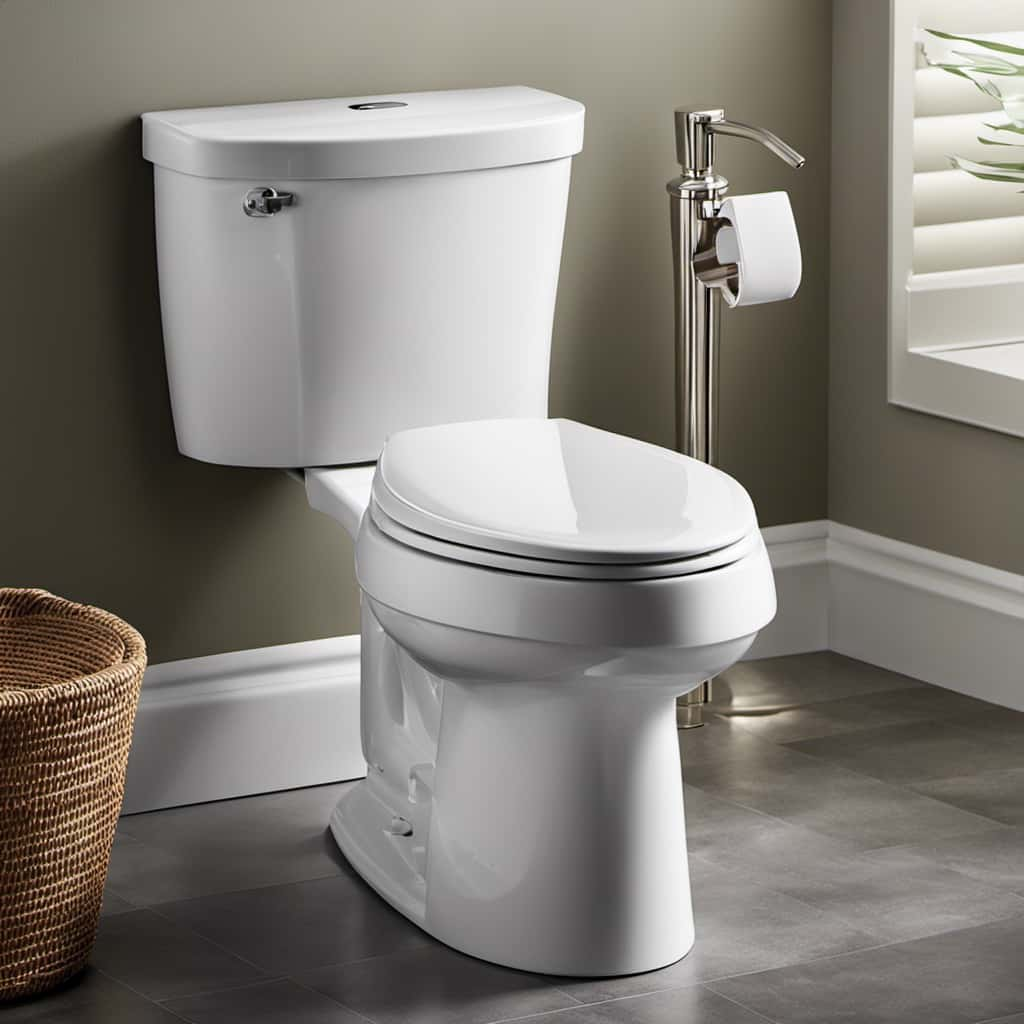
Key Takeaways
- Modern plumbing infrastructure in Greece is not designed to handle the disposal of toilet paper.
- Flushing toilet paper can lead to clogs and damage to the sewage system.
- Greece relies heavily on septic tanks, which have limited capacity to handle non-biodegradable materials like toilet paper.
- Aging infrastructure, limited capacity, and lack of maintenance contribute to the challenges in maintaining sewage systems in Greece.
Plumbing Infrastructure in Greece
Why is the plumbing infrastructure in Greece unable to handle flushing toilet paper?
Well, it all comes down to septic tank limitations and plumbing regulations.
Greece has a unique sewage system design that relies heavily on septic tanks. These tanks are designed to handle organic waste, such as human waste and toilet paper. However, they’ve limited capacity and aren’t equipped to handle large amounts of non-biodegradable materials like toilet paper.
To prevent clogging and potential damage to the system, it’s necessary to dispose of toilet paper in a separate bin provided in most restrooms. This may seem inconvenient, especially for those accustomed to simply flushing it down the toilet. However, it’s a necessary precaution to ensure the proper functioning of Greece’s plumbing infrastructure and sewage system design.
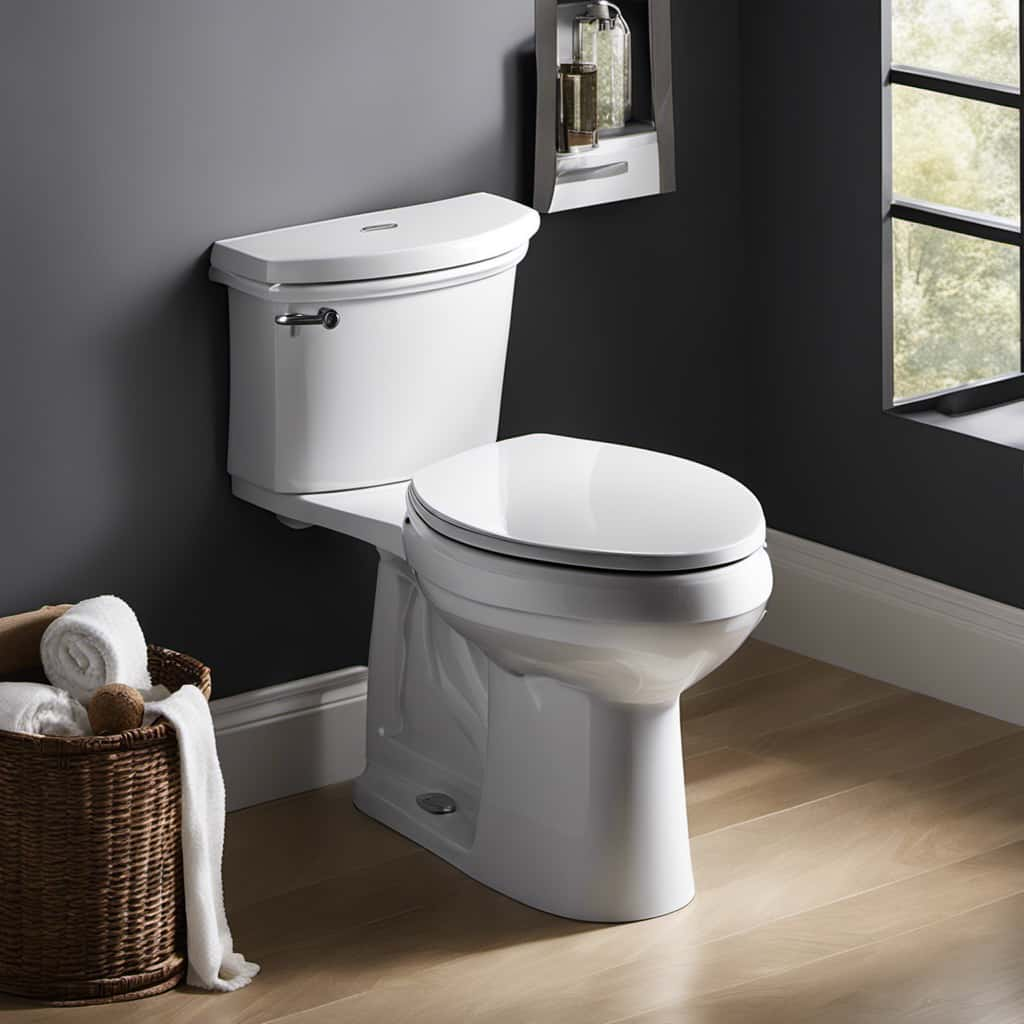
Now, let’s delve into the specifics of this unique sewage system design in Greece.
Sewage System Design in Greece
To understand the sewage system design in Greece and its limitations on flushing toilet paper, let’s delve into the unique infrastructure that relies on septic tanks and their capacity to handle non-biodegradable materials.
In Greece, municipal waste management is a significant challenge, and this extends to the sewage systems. Here are some key factors that contribute to the challenges in maintaining sewage systems in Greece:
- Aging infrastructure: Many sewage systems in Greece were built decades ago and haven’t been adequately updated or expanded to keep up with the growing population and increased waste production.
- Limited capacity: The septic tanks used in Greece have limited capacity to handle non-biodegradable materials like toilet paper, leading to frequent blockages and malfunctions.
- Lack of proper maintenance: Due to budget constraints and other priorities, the maintenance of sewage systems is often neglected, exacerbating the problems.
Understanding these challenges is crucial in comprehending the environmental impact of flushing toilet paper in Greece and finding sustainable solutions.

Environmental Impact of Flushing Toilet Paper
As we delve into the environmental impact of flushing toilet paper in Greece, it’s important to consider the consequences of disposing non-biodegradable materials into the aging sewage systems. The improper disposal of toilet paper can have detrimental effects on the environment. Flushing toilet paper contributes to paper waste management issues, as it adds to the volume of waste that needs to be treated and processed. This can put a strain on the already burdened sewage systems in Greece.
Additionally, excessive water usage from flushing toilet paper can conflict with water conservation measures that are in place to address water scarcity issues in the country. Therefore, it’s crucial to explore alternative methods of disposing of toilet paper to mitigate these environmental concerns.
Now, let’s transition into discussing the common alternatives to flushing toilet paper in Greece.
Common Alternatives to Flushing Toilet Paper in Greece
Now that we’ve explored the environmental impact of flushing toilet paper in Greece, let’s delve into the common alternatives we can use to avoid flushing it.

In Greece, bidet usage is a popular alternative to flushing toilet paper. Bidets are bathroom fixtures that spray water to clean oneself after using the toilet. They’re effective in removing waste without the need for toilet paper.
Another alternative is the use of composting toilets. These toilets are designed to convert human waste into compost that can be safely used as fertilizer. They use natural processes to break down waste, eliminating the need for flushing or traditional sewage systems.
Both bidet usage and composting toilets offer sustainable and hygienic alternatives to flushing toilet paper in Greece.
Cultural Norms and Etiquette Around Toilet Paper in Greece
In Greece, our cultural norms and etiquette dictate proper disposal methods for toilet paper. Unlike in many other countries, it isn’t common practice to flush toilet paper down the toilet. Instead, we’ve specific customs for disposing of it. This may seem strange to outsiders, but there are historical reasons behind this tradition.
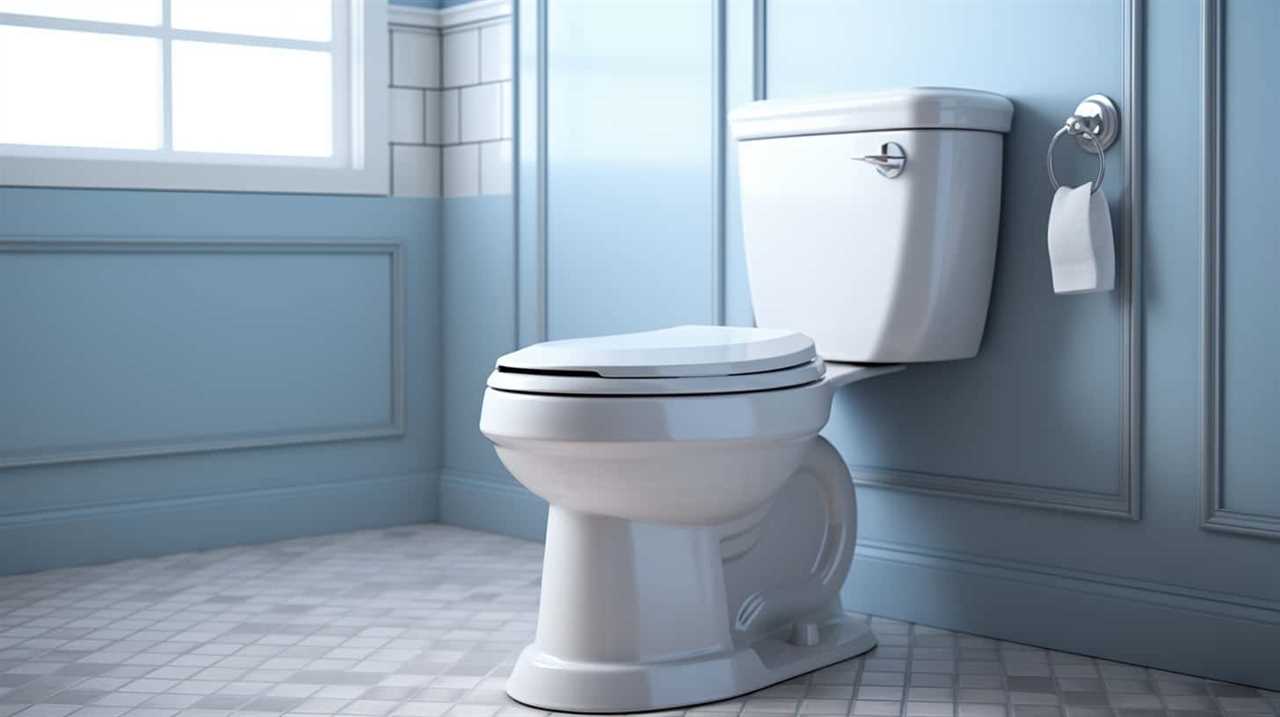
One of the main reasons for not flushing toilet paper in Greece is the age and condition of our plumbing systems. Many older buildings and houses have outdated pipes that aren’t designed to handle the flushing of toilet paper. Flushing it can lead to blockages and costly repairs.
Another reason is the concern for environmental impact. By not flushing toilet paper, we reduce the amount of waste that goes into the sewage system. This helps to protect our natural resources and minimize pollution.
Conclusion
In conclusion, when it comes to flushing toilet paper in Greece, it’s important to be mindful of the plumbing infrastructure and environmental impact. While it may not be the norm to flush toilet paper in Greece, there are alternative options available.
Understanding the cultural norms and etiquette around toilet paper can help us navigate this aspect of daily life in Greece with ease and respect. So, let’s embrace the unique customs and practices that make Greece truly special.

With an impeccable eye for detail and a passion for bathroom-related, Ava leads our editorial team gracefully and precisely.
Under her guidance, Best Modern Toilet has flourished as the go-to resource for modern bathroom enthusiasts. In her free time, you might find Ava exploring antique shops and looking for vintage bathroom fixtures to add to her collection.
-

 FAQ - Advanced Bathroom Queries3 months ago
FAQ - Advanced Bathroom Queries3 months agoWhat Happens if You Sit on the Toilet Too Long
-

 FAQ - Advanced Bathroom Queries3 months ago
FAQ - Advanced Bathroom Queries3 months agoWhy Is My Toilet so Loud When Refilling
-

 Guides3 months ago
Guides3 months agoTroubleshooting Dropping Water Level in Toilet Bowl: Causes and Solutions
-

 Guides3 months ago
Guides3 months agoToilet Water Supply Line Sizes: Finding the Right Fit
-

 Guides3 months ago
Guides3 months agoChoosing the Right Toilet Flange: A Comprehensive Guide
-

 FAQ - Advanced Bathroom Queries3 months ago
FAQ - Advanced Bathroom Queries3 months agoWhat Happens When You Put Baking Soda in Your Toilet
-

 Guides3 months ago
Guides3 months agoHow to Remove Crystallized Urine From Toilet Bowl
-

 Guides3 months ago
Guides3 months agoHow to Use Green Gobbler in Toilet





















